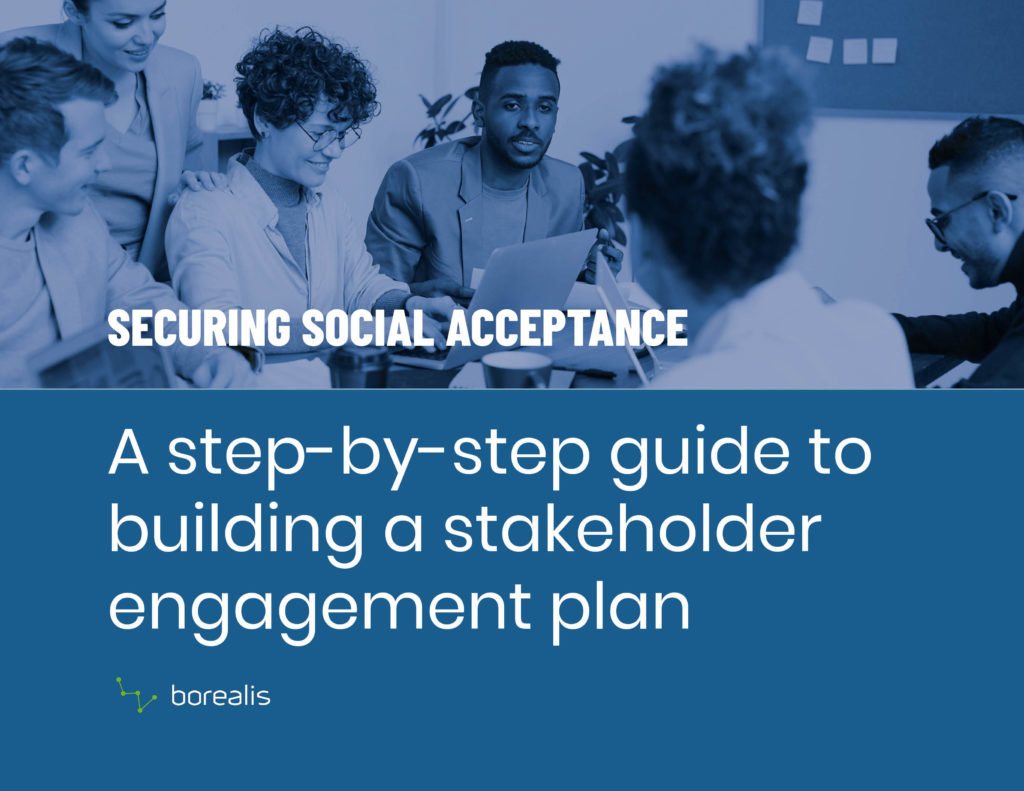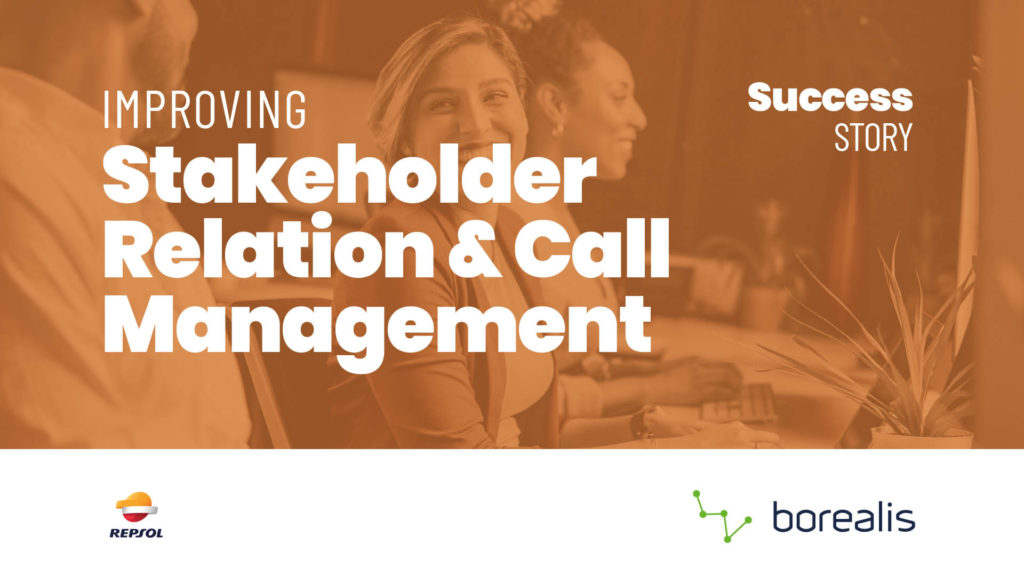Building good relationships with stakeholders is vital for effective engagement. Of course, having a ‘good relationship’ doesn’t mean all of your stakeholders will be happy all the time. At the end of the day, positive stakeholder relationships are based on trust. Good communication is key, so it’s important to create open, transparent channels of communication where people feel respected and listened to. But how to build stakeholder relationships using SRM software? Let’s take a look!
Understanding stakeholder relationships
Definition and significance of stakeholder relationships in various industries
Before understanding how to build stakeholder relationships, and why is it important to build stakeholder relationships, let’s dive deep into what stakeholder relationship signifies. Stakeholder relationships represent the intricate connections between organizations and those who hold a vested interest in their endeavors. These relationships are not merely transactional; they form the very foundation upon which success, reputation, and sustainability are built. In every sector, stakeholders wield significant influence, shaping decisions and outcomes.
Stakeholder relationships play a critical role across a spectrum of industries, each with its own unique challenges and opportunities. In renewable energy, stakeholders encompass environmental advocates, investors, communities, and policymakers, driving sustainable development and mitigating climate change. Similarly, in oil and gas, stakeholders include local communities, regulatory bodies, and environmental groups, shaping energy policies, and influencing operational practices. Forestry stakeholders range from conservationists to timber companies, balancing economic interests with ecological preservation and community livelihoods. Mining stakeholders, including governments, indigenous communities, and environmental NGOs, navigate complex issues surrounding resource extraction, land use, and social responsibility. In the food industry, stakeholders such as farmers, consumers, governments, and NGOs collaborate to ensure food safety, security, and sustainability. Transportation stakeholders, including commuters, regulators, and urban planners, work towards efficient, safe, and environmentally friendly mobility solutions. In government, stakeholders encompass citizens, elected officials, public servants, and special interest groups, driving policy decisions and public services. Lastly, in healthcare, stakeholders range from patients and providers to insurers, pharmaceutical companies, and policymakers, shaping access to care, medical innovation, and public health policies. Across these diverse sectors, effective stakeholder engagement is essential for fostering trust, promoting sustainable practices, and achieving collective goals amidst complex socio-economic and environmental dynamics.
The impact of these relationships on project success and organizational growth.
The impact of stakeholder relationships on project success and organizational growth cannot be overstated. Effective engagement with stakeholders can significantly enhance project outcomes by fostering support, collaboration, and buy-in throughout the project lifecycle. Stakeholders who feel valued and heard are more likely to contribute ideas, resources, and expertise, leading to better decision-making, innovation, and problem-solving. Moreover, positive relationships with stakeholders can mitigate risks, conflicts, and delays by addressing concerns proactively and building trust among all parties involved. This, in turn, contributes to project efficiency, cost-effectiveness, and overall success. Furthermore, strong stakeholder relationships can fuel organizational growth by enhancing reputation, attracting investment, and opening doors to new opportunities. Satisfied stakeholders are more likely to become advocates for the organization, promoting its products, services, and initiatives within their networks. Additionally, ongoing engagement with stakeholders enables organizations to adapt to changing market dynamics, regulatory requirements, and societal expectations, thereby fostering resilience and long-term viability. In essence, nurturing positive stakeholder relationships is not just a matter of goodwill; it is a strategic imperative for achieving project success and driving organizational growth in today’s interconnected and rapidly evolving business landscape. Let’s understand why is it important to build stakeholder relationships in more detail.
Why is it important to build stakeholder relationships
To understand why is it important to build stakeholder relationships, we need to first understand that strong stakeholder relationships foster trust, leading to smoother operations. Collaboration with stakeholders builds a supportive network for the business. These relationships enhance loyalty and commitment, reducing turnover. Understanding stakeholder needs allows for better alignment of business strategies. Consistent communication ensures transparency and minimizes misunderstandings.
Sustainable success stems from stakeholder engagement, as it fosters resilience in turbulent times. Positive relationships attract investment and opportunities. Stakeholders become advocates, promoting the business within their networks. Alignment of values and goals creates a shared vision for growth.
In the long term, these relationships create a competitive advantage. Adaptability improves through diverse perspectives and feedback. Innovation thrives with input from various stakeholders. Ethical practices are reinforced, enhancing reputation and brand value. Ultimately, strong stakeholder relationships form the foundation for sustained success and enduring growth.
How to build stakeholder relationships
Start engaging early
While engagement isn’t always seen as a priority during the initial project stages (for example, the exploration phase of a mining project), this is a missed opportunity! Getting your stakeholders on board from the start has significant benefits:
- Engaging with affected communities early in the process allows you to control the narrative. Be sure people hear about the project from you, not from speculation on social media. Reaching out to tell your stakeholders what’s coming is a great way to demonstrate transparency and build trust.
- Let your stakeholders know how their input will affect the project. People are usually more willing to engage when they believe that their participation will influence the outcome. Actively involving your stakeholders in project decisions shows that you want to do what’s right for them, which will help you gain their confidence, support, and approval.
- Early engagement can also help you identify risks and opportunities and build in solutions to resolve potential problems before they escalate. In fact, addressing stakeholders’ concerns before the project is in full swing can help you avoid project delays, cost overruns, and even work stoppages.
Conduct a thorough stakeholder analysis
Before you begin to engage, you’ll need to identify your stakeholders and conduct a thorough stakeholder analysis. As you go through this exercise, try to genuinely understand your stakeholders’ motivations and how they will be affected by the project. Determine who needs to know what, and when. This will help you define an appropriate engagement strategy for each group instead of taking a one-size-fits-all approach. A careful analysis can help you recognize what is important to your stakeholders, identify areas of disagreement, and work together to find acceptable compromises.
Be as accessible as possible
Making information and resources available in different formats (audio and/or video in addition to text, in person as well as online, and in different languages) will help create opportunities for more people to participate. It will also help ensure that your message is heard and understood by a wider audience.
Likewise, it’s a good idea to implement multiple channels for people to contact you with questions or feedback. Depending on the type of project and the stakeholders involved, people’s preferences may vary. Consider a number of options, such as a call center, a temporary office people can visit in person, an email address that can be shared widely, an online portal to file grievances, one-on-one meetings with important leaders, and door-to-door outreach. Be creative! For example, as part of their community relations strategy, Drummond LTD implemented this online portal, which gives users the option to provide feedback anonymously.
Communicate clearly and honestly
If you’re not sure how to build good relationships with stakeholders, think about how you would like to be treated if the roles were reversed. When you communicate with stakeholders, always be honest and direct. Don’t make any commitments you’re not sure you can keep! It’s important to be realistic, even if that means saying ‘no’ sometimes. While a stakeholder may be disappointed, they will respect your honesty. Being clear about which decisions have already been made and what is still uncertain will help you manage expectations. Share information as it becomes available and continue to communicate with stakeholders as the project unfolds.
Show stakeholders that you’re listening
Ultimately, stakeholders are doing you a favor by providing feedback, so try to make it convenient for them to communicate with you. Find out what contact method your stakeholders prefer and use that method as much as possible.
Listen without judgment to their feedback and really try to understand their point of view. Be respectful and patient, especially when there’s disagreement. Remember, you don’t have to agree about everything to build positive relationships with stakeholders. If you tell someone that you will follow up, be sure that you follow through. Take notes, and at the end of each session, repeat their key points back to them to be sure you understand. Don’t be afraid to ask for clarification if necessary. Stay curious, focus on areas where you do agree, and work together to identify mutually beneficial solutions.
And finally, don’t forget to thank your stakeholders for their time and input. People are usually more willing to participate when it’s clear that their efforts are recognized and appreciated!

Now that you’ve identified and analyzed your stakeholders, you’re ready to determine your communication strategies. Download our step-by-step guide for creating a solid stakeholder engagement plan.
Engaging with resistant stakeholders
Dealing with resistant stakeholders requires a combination of empathy and strategic communication. The next step of how to build stakeholder relationships effectively is knowing how to deal with resistant stakeholders.
First, actively listen to their concerns and perspectives without judgment. Acknowledge their apprehensions and the validity of their viewpoints.
Next, educate them about the reasons behind the proposed changes, highlighting potential benefits and addressing their fears. Transparency about the decision-making process fosters trust and reduces resistance.
Find common ground by emphasizing shared goals and values. Highlight how the proposed changes align with overarching objectives, demonstrating a mutual interest in success.
Engage resistant stakeholders in the decision-making process, allowing them to contribute ideas and suggestions. This sense of ownership increases their investment in the change initiative.
Lastly, provide support and resources to facilitate the transition, addressing any practical barriers they may face. Continuous communication and feedback loops are crucial to address concerns and adapt strategies as needed.
By combining these approaches, it’s possible to navigate resistance, foster collaboration, and ultimately achieve buy-in from even the most reluctant stakeholders.

Building and maintaining positive stakeholder relationships is hard work, but Repsol excels at it!
Their team is committed to addressing their stakeholders’ concerns in a way that’s as positive and efficient as possible. Find out how adopting fit-for-purpose tools has helped Repsol earn their stakeholders’ trust and set themselves apart from their competitors.
Leveraging technology in stakeholder relationship management
When dealing with the question of how to build stakeholder relationships, it is crucial to factor in the role of technology in this context. Stakeholder engagement professionals work hard to build productive, mutually beneficial relationships, but without the right tools it can be difficult to manage the endless stream of project data. And unfortunately, if you’re not able to extract insights from that data, much of its strategic value is lost. Thankfully, the professionalization of the industry has led to the development of specialized SRM systems, which are designed to manage stakeholder engagement effectively, based on industry best practices. Let’s look at how these fit-for-purpose tools can help organizations focusing on how to build good relationships with stakeholders.
Centralized data helps you see the big picture
- Centralized, structured data provides a global view of issues to help teams identify and evaluate risks as they arise.
- Data is always accessible and up to date. Custom dashboards allow you to track trends in real time.
- Analytical tools let users call up information in just a few clicks, so teams can respond quickly to stakeholders’ concerns and answer tough questions on the spot.
- A complete, well-documented corporate history lets teams build on lessons learned and know what’s important to people before engaging with them.
- Commitments are carefully documented to ensure timely follow-ups and make sure that nothing slips through the cracks.
Borealis features that help teams maintain constructive relationship with stakeholder
Engagement plans – Over the course of your project you’ll need to engage with different stakeholders, for different purposes, at different times. Borealis Engagement plans automatically generate actionable tasks and activities at the designated intervals. Simply assign these to your team and you can be sure you’re engaging appropriately with each stakeholder group according to their specific needs and concerns.
Mobile application – The Borealis mobile app offers a convenient, efficient way to enter and manage stakeholder data, upload photos or documents, and more, so you can respond quickly and proactively – even when you’re on the road. Consult up-to-the-moment stakeholder data before meetings to know where a stakeholder stands on your project and facilitate meaningful discussions. Document interactions while the information is fresh in your memory, and enter details in the system using voice input. This is a great way to instill trust in the person in front of you and show them that you’re taking their concerns seriously.
Outlook add-in – Our Outlook and Gmail add-in let users record and categorize communications and update stakeholder information in Borealis without ever leaving your email box, which saves everyone valuable time. It’s an easy way to make sure your records are up to date, so you always have a complete picture of the situation when meeting with stakeholders.
SMS messaging – Communicating with stakeholders using their preferred method is key to successful engagement, but keeping track of these communications is critical. The SMS messaging add-on lets you send messages to individuals or even to a whole list of stakeholders, and automatically documents each communication in Borealis along with their replies.
Grievance management system – Make it easy for stakeholders to share feedback and follow up on requests or any issues that were raised. The Borealis Grievance and Feedback portal provides a practical, convenient way to simplify the process. It allows stakeholders to communicate their issues (even anonymously, if they prefer to do so), and receive responses without compromising their identities. All channels feed into one centralized system to ensure efficient, thorough grievance management. Showing stakeholders that you’re ready to respond to their concerns builds trust, improves stakeholder satisfaction, and helps maintain social license to operate.
US elected official database – The US Elected Officials Database can be added to the Borealis Stakeholder Engagement Module, provides up-to-date contact information for federal, state, and local officials, streamlining outreach and engagement strategies for organizations. This automatic updating system ensures teams have the latest details post-election, minimizing manual record adjustments. It aids in identifying all relevant elected officials based on project locations, allowing for strategic communication and relationship management. The platform offers customization, efficient relationship management, proactive engagement planning, and advanced reporting tools for assessing stakeholder support and engagement outcomes, facilitating more effective government relations and advocacy efforts.
Analytics – The reporting tools in Borealis make it easy to monitor, measure, and understand the outcomes of your engagement activities, so you can be sure social acceptance is on track. Carefully monitor KPIs and trends to spot changes in real-time and engage more efficiently with stakeholders. Generate reports in just a few clicks to respond quickly to questions or requests and better prioritize everyday activities.
Data security – Between the risks posed by bad actors and the introduction of strict new data privacy laws, it’s more important than ever for teams to take the confidentiality and integrity of stakeholder data seriously. Borealis helps teams secure this important information to protect your organization and your stakeholders’ privacy, while also simplifying compliance with GDPR and other personal data regulations.
Which organizations should use a stakeholder relationship management system?
An SRM system is a good fit for organizations that:
- Have many stakeholders or a large staff managing engagement activities.
- Want to create a structured corporate memory to bring insights to operations.
- Benefit from visualizations tools that let them see the geographic location of stakeholders on a map (particularly helpful when starting a new project or developing large, distributed assets).
- Want to report on corporate and social responsibility, community engagement, social impact, sustainability reports, environmental and social governance, etc.
- Need to comply with regulations & requirements related to stakeholder relations.
Contact us
If you’re committed to building positive stakeholder relationships and wondering how to build good relationships with stakeholders, an SRM system can be a game changer. Learn how a Stakeholder Management system can help. Contact us today to find out how Borealis can elevate your stakeholder engagement!





